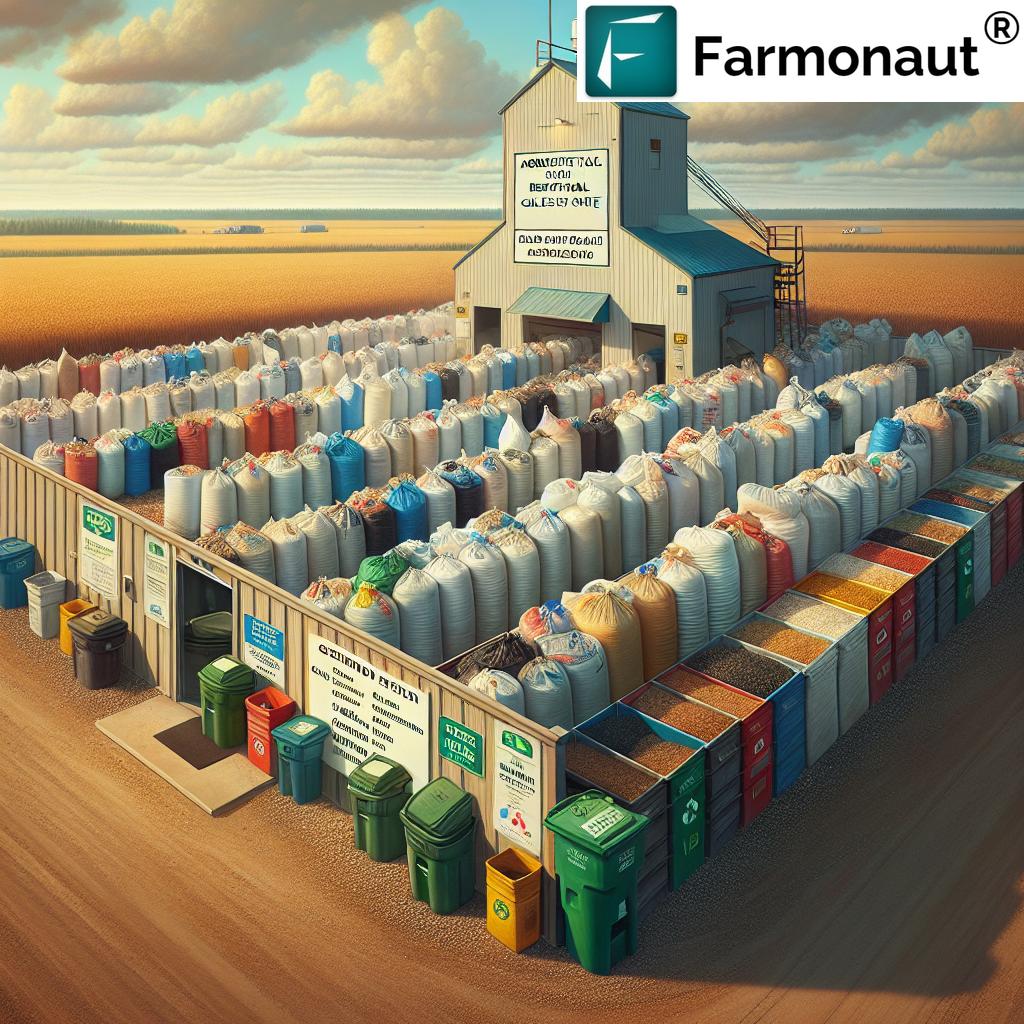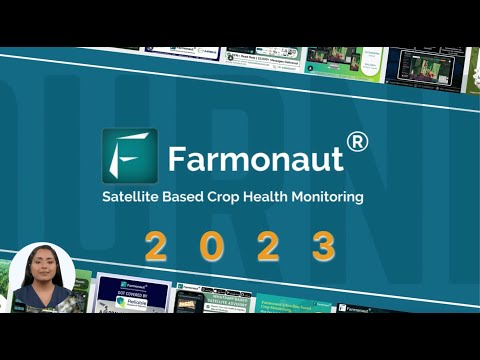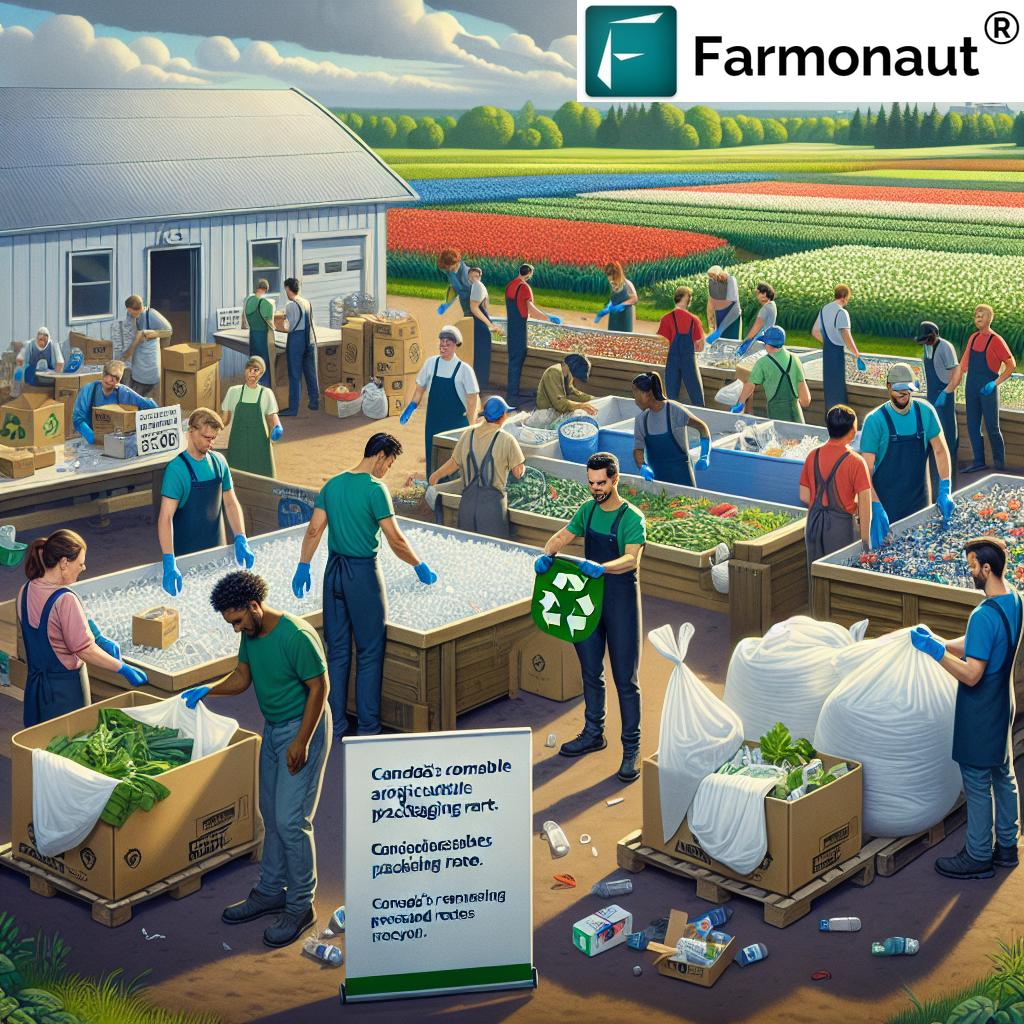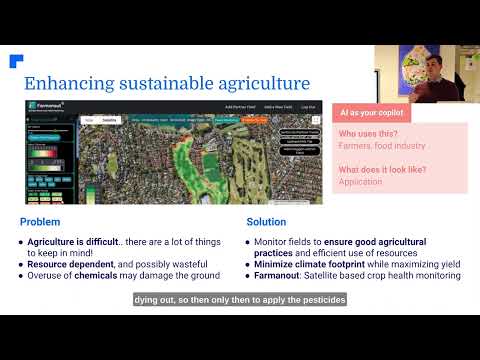Table of Contents
- Introduction: Earth Day and the Call for Sustainability
- The Leading Role of Farmers in Environmental Stewardship
- Farm Plastic Recycling in Canada: 2024 Milestone
- Agricultural Recycling Programs & Responsible Farm Packaging Management
- Collection Sites, Recovery Rate & Circular Economy in Agriculture
- Year-on-Year Farm Plastic Recycling Progress Table
- Grain and Silage Bag Recycling Initiatives
- Technological Innovation: Precision & Data-Driven Solutions for Canadian Farmers
- Farmonaut: Supporting Circular Economy in Canadian Agriculture
- Practical Recycling Strategies & Community Engagement
- The Future of Agricultural Plastics & Sustainability
- Frequently Asked Questions
- Conclusion: Strengthening Environmental Stewardship in Farming
Farm Plastic Recycling in Canada: 2.2 Million kg Collected in 2024
Introduction: Earth Day and the Call for Sustainability
April 22, Earth Day—an annual moment when citizens and organizations across Canada pause to reflect on our planet’s future. This year, we’re again reminded how critical environmental stewardship in farming is to support sustainability for generations to come. In Etobicoke, Ontario, Cleanfarms shines a well-deserved spotlight on Canadian farmers who are leading the charge in farm plastic recycling and agricultural recycling programs.
We know that farmers are not just producers of food—they are custodians of the land, carefully managing the delicate balance between productivity and the health of our environment. As the agricultural industry expands, challenges grow—especially in tackling used agricultural containers, crop input packaging, grain and silage bags, and other forms of ag plastics. Without responsible management, these materials often end up in the landfill or as waste.
But this year, Canadian farmers have proven their commitment by returning a phenomenal 2.2 million kg of used pesticide and fertilizer containers and farm plastics to over 1,300 collection sites nationwide. By participating in agricultural recycling programs, they are:
- Reducing agricultural plastic waste
- Supporting the circular economy in agriculture
- Improving recovery rates and recycling efforts across Canada
- Setting a leading example in environmental stewardship in farming
The Leading Role of Farmers in Environmental Stewardship
Farmers have always been the stewards of their land. Today, they are also leaders in reducing ag plastic waste and supporting a more sustainable, circular economy in agriculture. Their dedication goes beyond simply growing crops; it’s about building a legacy—one that values the health of the environment as much as productivity.
From Etobicoke, Ontario, to the fields of the prairies, Canadian farmers are taking responsibility for every type of farm plastic: from used crop input containers and large grain and silage bags, to even the smallest piece of twine. Every action, from collecting to returning materials for recycling, means less plastic in our environment and fewer materials sent to landfills.
Farm Plastic Recycling in Canada: 2.2 Million kg in 2024
This year marks a historic milestone for farm plastic recycling in Canada. On April 22, 2024, Cleanfarms reported that Canadian farmers returned and recycled 2.2 million kg of farm plastics, including used pesticide and fertilizer containers, grain and silage bags, twine, and more.
This achievement is not just a matter of numbers—it’s a reflection of the farmers’ commitment to environmental sustainability. With a strong three-year average recovery rate of 78% (2021–2023), the agricultural community is demonstrating that collective action yields real progress.
But what happens to these plastics? Once collected at sites nationwide, these used containers and bags are transformed into useful farm products in North America. This process reduces the demand for virgin plastics, conserves energy, and keeps valuable materials moving within the circular economy in agriculture.
Each piece of plastic that is recycled, each container kept out of a landfill, reflects the determination of Canadian farmers to support both the environment and their communities. This leadership reflects the innovative and collaborative spirit that continues to define agriculture in our nation.
Agricultural Recycling Programs & Responsible Farm Packaging Management
Our journey to sustainability in agriculture is advanced by agricultural recycling programs that operate across Canada. Programs like Cleanfarms offer resources, collection sites, and guidance that help farmers return and dispose of used packaging safely and efficiently.
- Used pesticide container collection ensures that these containers are not left on the ground or disposed of improperly. Instead, they re-enter the supply chain as part of new farm products.
- Grain and silage bag recycling captures high volumes of ag plastic used during harvest and storage, minimizing the risk of plastic pollution.
- Twine recycling initiatives are growing rapidly as more farmers recognize the impact of small plastic waste.
- Other materials, like chemical jugs and seed bags, are also part of evolving responsible farm packaging management protocols.
These programs are more than just logistics—they embody partnerships in action. They rely on the commitment of farmers, collection site staff, and industry partners. Through continuous improvement, these programs help us all take responsibility for the agricultural materials chain.
Collection Sites, Recovery Rate & the Circular Economy in Agriculture
For Canadian farmers, access to over 1,300 collection sites nationwide is fundamental for farm plastic recycling. These sites form the backbone of agricultural recycling programs. They serve as convenient drop-off locations for used containers, crop input packaging, grain and silage bags, and twine. Whether located in the heart of Etobicoke, Ontario, or the rural expanses of Saskatchewan, these sites bring recycling opportunities directly to those who play such a vital role in environmental stewardship.
The results speak for themselves—a three-year average recovery rate of 78% for major agricultural plastics. This means that nearly four out of every five eligible containers and packaging items are returned for recycling, rather than ending up as waste:
- Farmers get clear instructions on prepping and returning items
- Collection site staff provide on-the-ground support
- Recovered plastics are shipped to North American processors, where they become useful farm products
This circular economy in agriculture maximizes resource use, builds local industries, and keeps plastics out of our environment and landfills. It’s a proven, sustainable model, supporting both the health of the land and the prosperity of rural communities.
Year-on-Year Farm Plastic Recycling Progress Table
To truly understand how far farm plastic recycling in Canada has come, let’s examine the progress year by year. This table outlines estimated annual amounts collected, participating farms, recycling program launches, and the environmental impact:
| Year | Estimated Farm Plastic Collected (kg) | Number of Participating Farms | Major Recycling Initiatives Launched | Estimated Environmental Impact (CO₂ Saved, kg) |
|---|---|---|---|---|
| 2020 | 1,300,000 | 4,000+ | National container return program expansions | 1,040,000 |
| 2021 | 1,550,000 | 4,800+ | Pilot projects for silage and grain bags; twine collection pilots | 1,240,000 |
| 2022 | 1,800,000 | 5,600+ | Provinces-wide collection site upgrades; more community engagement | 1,440,000 |
| 2023 | 2,000,000 | 6,200+ | Permanent silage/grain bag programs; more rural and remote sites | 1,600,000 |
| 2024 | 2,200,000 | 7,000+ | Openings for additional agricultural plastics and packaging streams; integrated digital tracking | 1,760,000 |
This growth illustrates the positive impact of recycling solutions for Canadian farmers and underlines how innovation, education, and community action are moving us ever closer to a robust circular economy in agriculture.
Grain and Silage Bag Recycling: Innovations and Impact
One major leap for farm plastic recycling has been the expansion of grain and silage bag recycling programs across provinces. These bags are essential for storing and preserving crops—but they are also significant contributors to plastic waste if not managed responsibly.
- In more provinces, dedicated collection programs now accept silage and grain bags, turning them into reusable farm products.
- The focus is not just on large farms—small and mid-sized farming operations are increasingly engaged, making this a truly nationwide effort.
- We also see pilot projects testing new processes, machinery, and logistics to ensure recycling is efficient and cost-effective for all farmers.
These initiatives reduce the volume of agricultural plastics going to landfill, improve recovery of high-quality polymers for recycling, and stimulate green innovation within rural economies.
Precision & Data-Driven Solutions: The New Era of Sustainability
While the physical act of returning used containers and managing farm packaging is crucial, technology is propelling the industry forward. Canadian farmers now increasingly rely on data-driven platforms and digital tools for smart resource management, traceability, and precise sustainability tracking.
One such innovation is Farmonaut—a leading provider of advanced, satellite-based farm management solutions. While Farmonaut is neither a marketplace nor a seller of plastic or ag inputs, we use technology to equip farmers and agribusinesses with:
- Real-time crop health monitoring (NDVI, soil moisture, crop status, pest/disease detection)
- Carbon Footprinting tools—allowing farmers to measure and take action to reduce greenhouse emissions, which is critical for environmental stewardship in farming
- Blockchain-based traceability systems—boosting transparency and trust in food supply chains, essential for responsible management and compliance
- AI advisory and decision-support systems for optimal fertilizer use and irrigation planning, reducing agricultural plastic waste from overuse and runoff
- Fleet management solutions—helping large-scale operations minimize machine time, reduce fuel, and operate efficiently
Tools like this foster more precise, data-backed decisions. By optimizing the use of every input and minimizing wastage, we collectively reduce our environmental footprint while supporting higher yields and profits for Canadian farmers.
Developers and businesses can also harness the power of Farmonaut via our Satellite Weather & Farm Data API (API Developer Docs), integrating rich ag data into their own services for research, digital farming, or environmental analytics.
Farmonaut: Supporting Circular Economy in Canadian Agriculture
While not a regulatory body or input supplier, Farmonaut stands as a beacon of technology-driven sustainability. Our mission is to democratize precision agriculture, putting it within reach for farmers—from independent producers to large co-ops—right across Canada and beyond.
- Our large-scale farm management system streamlines monitoring for big operations.
- Our advisory platform integrates satellite intelligence with AI to improve crop yields and promote sustainable resource use.
- With satellite-based crop loan and insurance verification, we help ensure fair and accessible financing for farmers while reducing fraud and improving resilience.
By providing actionable insights, cutting-edge technology, and scalable solutions, we join the cause for reducing agricultural plastic waste and supporting the circular economy in agriculture.
Practical Recycling Strategies & Community Engagement
In 2024, we see the strengthening of partnerships between farmers, collection site staff, and communities. Every season, as sites open for container and bag returns, several best practices emerge:
- Pre-cleaning and prepping containers for drop-off ensures a high-quality recycling stream.
- Storing used agricultural plastics in designated areas makes return easier and more efficient.
- Educational workshops keep farmers updated on recycling solutions, collection schedules, and regulatory requirements.
- Testing and refining pilot strategies encourages innovation and ensures recycling works on every scale—from large grain producers to family farms.
By sharing knowledge, building practical systems, and maintaining a sense of community, we make responsible management of ag plastics a routine part of farming.
The Future of Agricultural Plastics & Sustainability in Canada
Looking ahead to the 2025 collection season and beyond, the outlook for agricultural recycling programs in Canada is bright. Every year, more farmers join, new sites open, and the infrastructure for responsible farm packaging management grows stronger.
Key priorities include:
- Expanding accepted materials: As recycling technology improves, programs can accept a wider array of plastics, including more types of bags and specialty packaging.
- Increasing rural access: Investing in rural collection infrastructure ensures that all generations of farmers—even in remote areas—can participate.
- Boosting education and outreach: Ongoing community engagement will further increase recovery rates and unlock greater environmental value.
- Harnessing digital tracking: With digital tools, every container and bag returned can be traced, providing transparency and more opportunities for responsible management.
With each innovation and each new recycling site, we’re shaping a future where environmental stewardship in farming is the norm, not the exception.
Frequently Asked Questions
What are the main materials collected in farm plastic recycling in Canada?
Key materials include used pesticide and fertilizer containers (up to 23L), grain and silage bags, bale wrap, seed bags, and baler twine.
How effective are Canadian agricultural recycling programs?
With a three-year average recovery rate of 78% (2021–2023), these programs are among the most successful globally, reflecting strong engagement from farmers and robust collection site infrastructure.
What happens to plastics after collection?
Collected plastics are transformed into useful farm products within North America, helping reduce the need for virgin plastics and supporting a circular economy in agriculture.
How does Farmonaut support Canadian farmers’ sustainability goals?
Farmonaut delivers actionable insights through advanced crop health monitoring, resource optimization, and carbon footprint tracking, helping farmers reduce input waste, boost productivity, and support environmental stewardship in farming.
Does Farmonaut help with farm input sales or regulate recycling standards?
No. Farmonaut provides farm management technology—including satellite data, AI advisory, and traceability tools—but is not a marketplace, input supplier, or regulatory body for agricultural plastics recycling.
How can a farmer get started with digital, sustainable farm management?
Farmers can easily sign up for Farmonaut’s tools using our web and mobile apps, or integrate our API—unlocking affordable access to precision ag insights and sustainability monitoring.
Conclusion: Strengthening Environmental Stewardship in Farming—Our Shared Responsibility
As the 2025 collection season approaches, we are reminded that farmers are at the heart of Canada’s journey toward sustainability. Their work in agricultural recycling programs, leadership in responsible packaging management, and commitment to returning used containers and farm plastics propel us all toward a brighter, greener future.
Technology platforms like Farmonaut multiply these efforts, bringing advanced analytics and actionable advice to every field, barn, and collection site. By working together—farmers, communities, technologists, and citizens—we ensure that the legacy of environmental stewardship in farming continues for future generations.
Let’s celebrate Canadian farmers on Earth Day and every day, as they support a truly circular economy in agriculture—one that values the land, the environment, and the health of all who depend on it.








